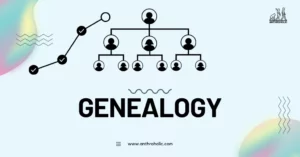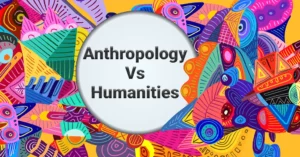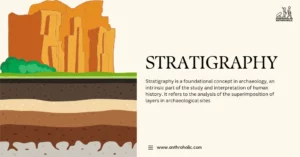AI Answer Evaluation Platform Live Now. Try Free Answer Evaluation Now
Darwinism
Darwinism, named after its pioneer Charles Darwin, refers to the evolutionary theory he proposed, which has since served as the foundational concept of biological sciences [1]. This theory was first articulated in his seminal work, “On the Origin of Species,” where he argued that all species of organisms arise and develop through the natural selection of small, inherited variations that increase the individual’s ability to compete, survive, and reproduce [1].
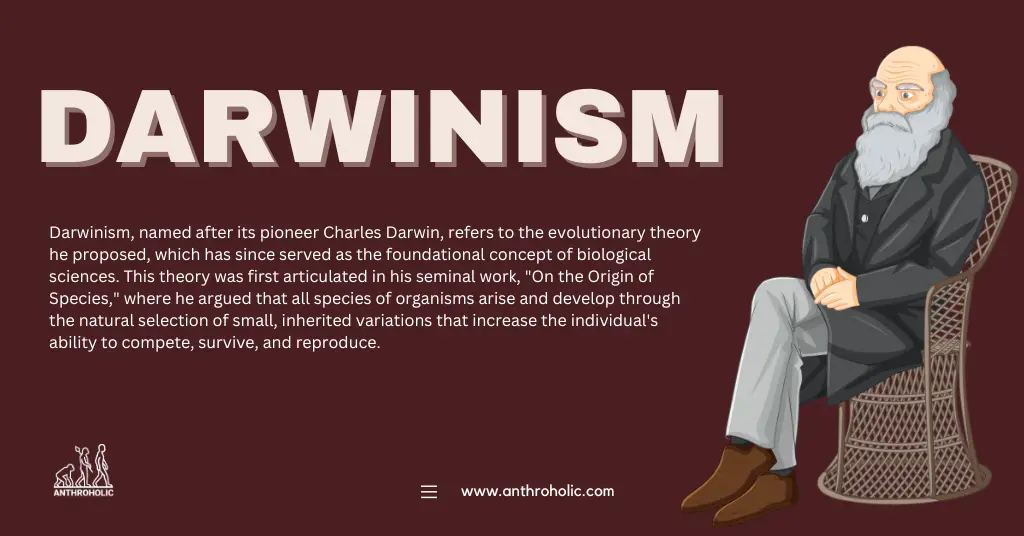
Before Darwin, theories of life were largely shaped by religious and philosophical views, most notably the concept of special creation, which posited that each species was independently created. However, Darwin’s ideas, based on empirical evidence and his extensive observations during his voyage on the Beagle, challenged these beliefs and set a new course for understanding the natural world [2].
Darwin’s idea of natural selection, often described by the phrase “survival of the fittest,” suggested that individuals best adapted to their environment are more likely to survive and pass their traits onto their offspring [1]. Over generations, this process would lead to species gradually changing and new species emerging.
While Darwinism primarily focused on biological evolution, his ideas have had profound implications beyond the field of biology, influencing various domains, including psychology, sociology, and anthropology.
Importance and Relevance of the Topic
The relevance and importance of Darwinism in anthropological studies cannot be overstated. Darwin’s ideas have significantly shaped how anthropologists understand human evolution, behavior, culture, and society [3]. By emphasizing the role of natural selection and adaptation in human development, Darwinism offers a crucial lens through which to view the biological and cultural diversity of humans across time and space.
The concept of evolution is integral to biological anthropology, providing explanations for physical variation among humans and the biological processes involved. Meanwhile, cultural anthropologists use evolutionary concepts to analyze how human societies evolve and adapt, not just biologically but also in terms of their cultural practices and societal structures.
In the realm of linguistic anthropology, the evolutionary perspective helps in tracing the development and diversification of languages over time. And in archaeology, Darwinian principles guide understanding of how technological innovations spread and transform societies.
Moreover, despite being more than a century old, Darwinism remains relevant in the contemporary discourse. As we continue to grapple with challenges such as climate change, disease pandemics, and societal inequality, the principles of Darwinism can offer valuable insights into how human populations adapt and respond to changing environmental and social conditions.
Charles Darwin: Life and Legacy
Charles Darwin was born on February 12, 1809, in Shrewsbury, England, into a family of well-respected and well-off doctors. His early education included a stint studying medicine at the University of Edinburgh, but he was uninterested in the field. He then went to Christ’s College, Cambridge, intending to become a clergyman.
The turning point in his life was a five-year voyage aboard the HMS Beagle, which set sail in December 1831 [2]. The Beagle’s journey took Darwin around the world, and his duties as a naturalist provided him with ample opportunities to observe and document the natural world.
The voyage was pivotal in shaping Darwin’s ideas about natural selection. Particularly influential was his visit to the Galapagos Islands, where he noticed slight variations in the traits of animals from different islands, which would later inform his ideas about evolution.
After returning to England, Darwin spent decades developing his theory, eventually publishing “On the Origin of Species” in 1859. In it, he presented substantial evidence supporting his theory of evolution and the mechanism of natural selection, challenging the prevailing belief in the special creation of species [1]. His work ignited a revolution in scientific thought, and its influences continue to resonate across various scientific disciplines [3].
Evolutionary Theory: Natural Selection and Survival of the Fittest
The theory of evolution by natural selection, as proposed by Darwin, posits that organisms with traits better suited to their environment are more likely to survive and reproduce. These advantageous traits, being heritable, are more likely to be passed on to the next generation, leading to gradual changes in species over time [1].
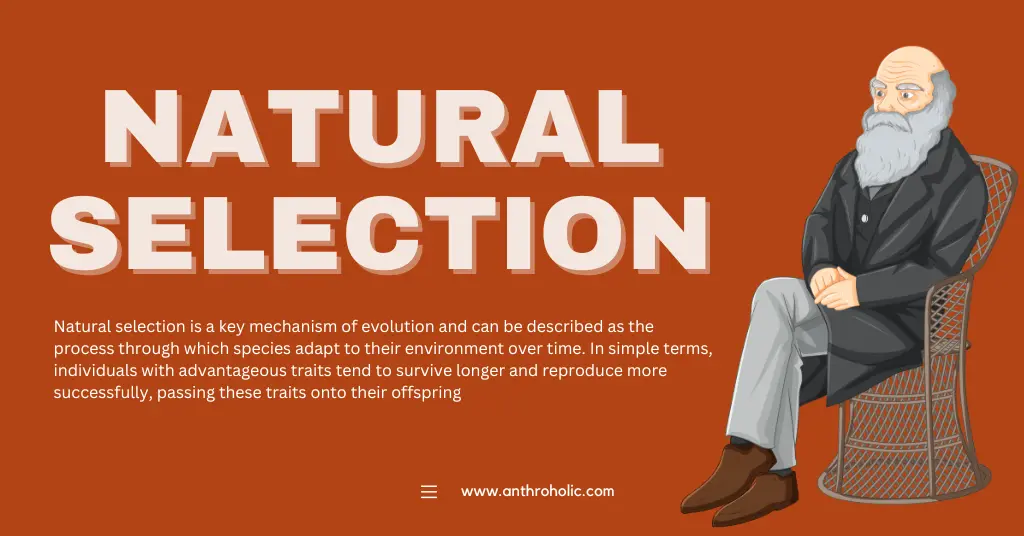

The concept of “survival of the fittest” encapsulates this idea. Herbert Spencer, a contemporary of Darwin’s, coined this phrase after reading “On the Origin of Species.” It’s important to note that “fit” in this context refers to an organism’s reproductive success, rather than physical fitness [4].
Evolution by natural selection emphasizes the dynamic relationship between organisms and their environment. Environmental pressures influence the survival and reproduction of individuals, and over time, populations evolve to exhibit traits that enhance survival and reproductive success in specific environmental conditions [5].
This evolutionary framework provides a powerful tool for understanding the diversity of life on Earth, explaining how complex organisms and ecosystems can arise from simple, gradual processes over geological time scales. It remains a cornerstone of modern biology and related disciplines, including anthropology, offering insights into the evolutionary history and adaptive nature of humans [5].
Debunking Misconceptions About Darwinism
Despite the acceptance of Darwin’s theory of evolution by natural selection in scientific communities, public misunderstanding and misconceptions persist. Here, we will debunk some of the most common misconceptions.
- Survival of the Fittest Means “Survival of the Strongest”: The phrase “survival of the fittest” is often misunderstood to mean “survival of the strongest” or the most physically fit. In reality, “fit” in this context refers to an organism’s ability to survive and reproduce in its environment [5]. Sometimes, this might mean being the fastest or strongest, but it could also mean being the most resistant to a particular disease, the most adept at finding food, or even being the most attractive to potential mates.
- Humans Descended from Monkeys: While humans and monkeys share a common ancestor, humans did not evolve from monkeys. The common ancestor that humans share with monkeys existed millions of years ago and is now extinct. Over time, different evolutionary paths led to the diverse array of primates we see today, including both humans and monkeys.
- Evolution Is Just a Theory: In scientific terminology, a “theory” is a well-substantiated explanation of some aspect of the natural world, based on a body of evidence. This is different from the everyday use of “theory” as a guess or a hunch. The theory of evolution is supported by an extensive body of evidence from a wide range of scientific disciplines, including paleontology, genetics, and comparative anatomy.
- Evolution Leads to Perfection: Evolution does not lead to perfect organisms. Instead, it leads to organisms that are well-suited for their specific environments at a particular time. Furthermore, evolution does not necessarily lead to increased complexity. In some cases, simpler traits or structures may be more advantageous [6].
Biological Anthropology: Human Evolution and Physical Adaptation
Biological anthropology, also known as physical anthropology, applies the principles of evolution to understand human physical characteristics and behavior. Through the study of fossils, genetics, and human variation, biological anthropologists trace our species’ evolutionary history, shedding light on how we’ve physically adapted to changing environments.
One crucial area of study is the evolution of human traits such as bipedalism, increased brain size, and reduced dentition. By comparing the skeletal and genetic characteristics of modern humans with extinct hominins and other primates, researchers can gain insights into our species’ unique evolutionary pathway.
Cultural Anthropology: Cultural Evolution and Change
Cultural anthropology investigates human societies and cultures, studying how humans construct and interpret their social worlds [7]. Cultural anthropologists often employ Darwinian principles to explain cultural changes and diversity.
Cultural evolution refers to the change in human culture over time, driven by mechanisms such as innovation, social learning, and cultural selection. For instance, social norms, belief systems, or technologies that contribute to the survival or reproduction of a group may spread through a population, much like advantageous genes spread in biological evolution [3].
Linguistic Anthropology: Language Evolution

Linguistic anthropology examines language in social and cultural contexts. The evolution of language, in particular, is a fascinating area of study. Although the origins of language remain shrouded in mystery due to lack of physical evidence, linguistic anthropologists use various approaches to trace language development and change.
Some theories propose that language evolved as a form of social bonding, while others suggest it arose from the need to share complex ideas. By studying existing languages and their changes over time, linguistic anthropologists can infer how languages may have evolved and diversified.
Archaeology: Technological Evolution and Material Culture
Archaeology, the study of past human societies through their material remains, often incorporates Darwinian principles to explain technological change and evolution. For instance, stone tools, pottery, and metal artifacts can all provide evidence of how technology has evolved in response to changing environmental and social conditions.
The spread of technologies, whether through independent invention, diffusion, or migration, can be studied in a similar vein to genetic spread in populations. Understanding the evolution of material culture can reveal insights into past human behaviors, adaptations, and societal changes.
Criticisms of Darwinism in Anthropological Theory
Despite its widely acknowledged significance, Darwinism is not free from critique within anthropological theory. Some criticisms argue that Darwinian principles, primarily derived from studies of non-human species, may not fully explain the complexity of human behavior and culture [8]. For example, the role of agency, conscious thought, and symbolic meanings, key aspects of human societies, are not easily incorporated into Darwinian frameworks.
Moreover, some argue that Darwinian theory, by focusing on adaptation and survival, may oversimplify human diversity, reducing cultural phenomena to mere survival strategies. In other words, not all cultural practices can be neatly explained by adaptive benefits. Critics also point out that Darwinism can lead to biological determinism, neglecting the influence of social, historical, and environmental contexts in shaping human behaviors and cultures.
Darwinism vs. Creationism: Cultural and Societal Perspectives
The ongoing debate between Darwinism and Creationism represents a clash of cultural and societal perspectives regarding the origins and development of life on Earth. Darwinism, grounded in scientific theory and evidence, posits that species have evolved over time through natural selection and common ancestry. Creationism, on the other hand, is rooted in religious beliefs and asserts that a divine being created the universe and all living organisms in their current form.
From a cultural perspective, beliefs about the origins of life are deeply intertwined with religious, philosophical, and cultural worldviews. Creationism often finds its roots in religious texts, such as the accounts of creation found in the Bible. For many adherents, these accounts hold profound spiritual and moral significance, providing a framework for understanding the purpose and meaning of human existence.
Societally, the debate between Darwinism and Creationism has had significant implications, particularly in educational settings. The teaching of evolutionary theory, as supported by scientific consensus, has faced opposition from Creationist groups and individuals who advocate for the inclusion of alternative views, such as Intelligent Design, in science curricula. These debates highlight larger societal tensions between science, religion, and the role of education in shaping public knowledge and understanding.
Moreover, the Darwinism versus Creationism debate is not limited to academic or scientific circles. It has found expression in legal battles, public policy discussions, and broader cultural discourse. For example, court cases regarding the teaching of evolution in schools, such as the famous Scopes Trial in 1925, have drawn public attention to the clash between scientific and religious perspectives. Similarly, controversies surrounding the inclusion or exclusion of Creationism in science education reflect divergent views on the appropriate role of religion in public schools.
It is important to note that many individuals and religious communities find ways to reconcile Darwinian evolutionary theory with their religious beliefs. They interpret religious texts metaphorically or see the process of evolution as part of the divine plan. The perspectives on Darwinism and Creationism within cultures and societies can be diverse, nuanced, and subject to personal interpretation.
The Darwinism versus Creationism debate raises profound questions about the nature of scientific inquiry, the limits of knowledge, and the interplay between science and religion in society. It underscores the complexities of navigating differing worldviews and the ongoing tension between empirical evidence and deeply held beliefs in cultural and societal contexts.
The Role of Determinism in Darwinism
Determinism in Darwinism refers to the idea that natural selection and genetic inheritance strictly determine biological characteristics and behaviors. This perspective, often known as biological determinism, asserts that genes determine everything about an organism, from physical traits to behaviors, with minimal influence from the environment or learning.
However, modern understandings of genetics and evolution reject such a simplistic view. Current research recognizes the importance of gene-environment interactions, epigenetics, and developmental plasticity, emphasizing that while genes provide a blueprint, they do not dictate the final outcome. This nuanced understanding challenges deterministic views, acknowledging that while Darwinian principles are integral to our understanding of life, they do not solely determine the trajectory of an organism’s development.
Case Study 1: Specific Anthropological Application of Darwinism (Biocultural Adaptation)
A perfect example of a biocultural adaptation, where both biological and cultural factors play a role, is the prevalence of lactose tolerance among certain human populations. Originally, all humans were lactose intolerant after weaning, but with the advent of dairy farming, a significant mutation allowed certain populations to digest lactose into adulthood. This adaptation was not evenly spread globally but is particularly prevalent among populations with a historical dependence on unfermented milk products, such as Northern Europeans.
Case Study 2: Cultural Evolution in a Particular Society (Technological Advancements)
The cultural evolution of Japanese society, particularly in terms of technology, provides a vivid illustration of Darwinian principles. Japan’s technological evolution can be seen as an adaptive response to both internal needs and external pressures. For instance, the rapid industrialization during the Meiji era (1868-1912) was a cultural adaptation to the need for modernization and international competition. More recently, Japan’s development of advanced robotics and AI technologies can be seen as cultural adaptations to an aging population and labor shortages.
Case Study 3: Linguistic Evolution (Evolution of a Particular Language)
The evolution of English provides a fascinating study in linguistic anthropology. Originally a Germanic language, Old English underwent substantial changes due to Norman French influence after the Norman Conquest in the 11th century. This period of contact led to significant lexical borrowing, resulting in a more complex vocabulary system. English continued to evolve through the centuries, adapting to societal changes, technological advancements, and increased globalization, resulting in the rich and varied language we know today.
Intersection of Darwinism and Genetics: Understanding Human Diversity
The fusion of Darwinian theory with the science of genetics has revolutionized our understanding of human diversity. This intersection is best exemplified in the field of population genetics, which studies the distribution and change of frequencies of genetic variants within populations, revealing insights into human evolutionary history.
For instance, studies on genetic diversity among human populations have deepened our understanding of migration patterns, interbreeding with archaic hominins, and adaptive evolution in response to diseases, diet, and climate. Moreover, the advent of genomics and advances in DNA sequencing technology have made it possible to trace human evolution and migration more precisely than ever before.
The Role of Darwinism in Contemporary Anthropology
In contemporary anthropology, Darwinian theory remains foundational, especially in areas like biological anthropology and archaeology. However, anthropologists today take a more nuanced approach, recognizing that while natural selection plays a critical role, human evolution is influenced by a multitude of other factors including cultural, social, and environmental variables.
Furthermore, contemporary anthropologists often draw upon theories of “dual inheritance” or “gene-culture coevolution,” which posit that human behavior and culture are products of the interaction between genetic and cultural evolution. Darwinism in the 21st-century, thus, continues to be a crucial part of anthropological theory, but its application is now more multifaceted and integrated with other scientific insights.
Implications for Future Anthropological Studies
In future anthropological studies, Darwinian theory will continue to play a crucial role, albeit within an increasingly interdisciplinary and nuanced context. For one, the burgeoning field of cultural evolutionary studies, which applies evolutionary concepts to understand cultural change over time, is reinvigorating the interface between anthropology and Darwinism. This research is not merely about identifying patterns of cultural change but understanding the mechanisms that drive these patterns, from technological advances to environmental shifts.
Moreover, advancements in genetics and genomics, coupled with archaeological and paleoanthropological evidence, are increasingly enriching our understanding of human evolution and diversity. Future anthropological studies will undoubtedly leverage these technological advancements, leading to deeper insights into how genes, culture, and environment interact over time.
An essential aspect of future anthropological research will be to critically examine and address the ethical, sociopolitical, and cultural implications of these scientific advancements. Anthropologists, for example, will need to carefully consider the ethical implications of genetic research, such as the privacy concerns of study participants and potential misuse of genetic data.
The growing recognition of the importance of culture in human evolution will also entail a more holistic and nuanced understanding of human behavior and societies. This includes not only focusing on how culture shapes human evolution but also understanding how societal structures, institutions, and power dynamics influence the process and direction of cultural evolution.
Finally, anthropological studies will continue to contribute to global conversations on critical issues, such as climate change and public health. By integrating evolutionary perspectives, anthropologists can offer unique insights into how humans have adapted to changing environments in the past and how we might respond to future challenges.
FAQs about Darwinism
References
[1] Darwin, C. (1859). On the origin of species by means of natural selection, or the preservation of favored races in the struggle for life. London: John Murray. https://www.loc.gov/item/06017473/
[2] Darwin, C. (1839). Journal of researches into the geology and natural history of the various countries visited by H.M.S. Beagle. London: Henry Colburn. https://www.christies.com/en/lot/lot-5495303
[3] Richerson, P. J., & Boyd, R. (2005). Not by genes alone: How culture transformed human evolution. Chicago, IL: University of Chicago Press. http://dx.doi.org/10.7208/chicago/9780226712130.001.0001
[4] Spencer, H. (1864). Principles of Biology. London: Williams and Norgate.
[5] Mayr, E. (2001). What evolution is. New York, NY: Basic Books.
[6] Gould, S. J. (2002). The structure of evolutionary theory. Cambridge, MA: Belknap Press.
[7] Geertz, C. (1973). The interpretation of cultures: Selected essays. New York: Basic Books.
[8] Ingold, T. (2007). The trouble with ‘Evolutionary Biology’. Anthropology Today, 23(2), 13–17.
[9] Mayr, E. (1982). The Growth of Biological Thought: Diversity, Evolution, and Inheritance. Cambridge, MA: Harvard University Press. https://doi.org/10.1126/science.216.4548.842


